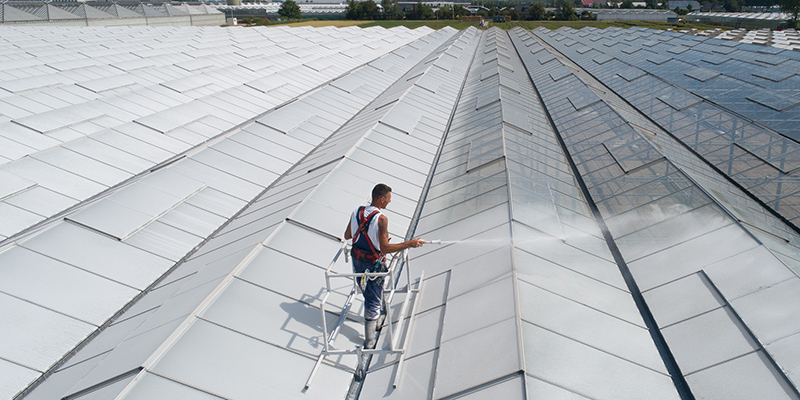Tips For Beautiful Bare Root Hibiscus

Hardy hibiscus continues to be a popular perennial grown for summer sales. One grower who began offering bare root hibiscus materials a few years ago is Walters Gardens. And although bare root hibiscus offers numerous benefits, many growers are still not familiar with this type of starting material.
Bare root hibiscus are field grown and offer growers a much larger, more vigorous starter plant compared to the smaller liners typically used in the past. Bigger starter plants mean faster turnaround times, fuller containers with more flowers per pot and a high perceived quality.
Flowering Characteristics
Besides the benefits of using bare root plants, growers should consider the
type of flowering each cultivar offers. Not all hibiscuses are created equal. There are two types of flowering habits: determinate and indeterminate.
Cultivars with determinate flowering develop flower buds near the terminal shoot. Indeterminate varieties develop flower buds at the nodes along much of the stem, as well as near the terminal shoots. Therefore, indeterminate cultivars produce more flowers and bloom considerably longer than determinate varieties.
Most of the older genetics on the market are determinate bloomers with flowers lasting for about one month during the summer. All of the new Walters introductions are indeterminate bloomers and flower consistently for two to three months or longer.
Production Guidelines
Upon receipt, bare root hibiscus will often have large root systems that may be too large to fit the container they are going to be growing in. Hibiscus from bare root is most suitable for production in 2-gallons or larger containers. If the roots are too large to fit into the container, the roots can be trimmed to a 3- to 4-inch radius or 6 to 8 inches in total width. When potting, plant the crown of the plant so that it is slightly below the media surface.
Although one advantage of using bare root hibiscus is the numerous shoots that emerge from the crown, the fullest and highest quality finished product is obtained by pinching them early in the production cycle. After the emerging stems have developed at least five nodes, soft pinch them by removing the terminal growing point from every stem in each container, leaving three to five nodes on each stem. Pinching can be done by hand or using scissors. Additional pinches can occur a few weeks later if more branching is desired.
Bare root hibiscus prefer to be kept consistently moist during production. Never allow them to wilt because they may experience lower leaf yellowing, and flower bud abortion will likely occur.
Due to their vigorous growing habit, hibiscuses require ample amounts of nutrients. Provide 150 to 200 parts per million (ppm) nitrogen with every irrigation, incorporate a medium rate of a reliable controlled-release fertilizer formulation at potting. The acceptable pH range is 6.0 to 6.5. Grow hibiscus outside in full sun or in greenhouses with high light intensities.
One of the keys to successful production is to grow plants warm. Hibiscus does not grow well in cool temperatures. When the temperatures are about 60°F, the plants grow slowly and may appear chlorotic. The best growth and development occurs with day temperatures above 70°F and night temperatures above 68°F. Hibiscus require long days for flowering.
For 2-gallon crops that have been pinched once early in production when grown at the proper temperatures, allow 12 to 14 weeks from planting to flower. For crops that have been pinched on multiple occasions, allow six weeks from the time of the last pinch for them to reach flowering.
Takeaways
With their brilliant and impressive flower displays, hardy hibiscus provides great appeal and presence in garden centers and summer landscapes. Walters Gardens continues to improve plant appearance and flowering characteristics through their breeding efforts. Additionally, many benefits, including improved final plant quality and reduced production time using Walters’ bareroot hibiscus, make hardy hibiscus a cost effective option for summer programs.









